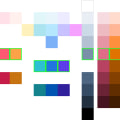In today's digital landscape, user experience is crucial for the success of any product or service. This is where usability testing platforms come into play, helping designers and researchers gather valuable insights from real users to improve their user interface design. Whether you are a seasoned UX professional or just starting out, having the right tools and resources at your disposal can make all the difference in creating a seamless and intuitive user experience. In this article, we will explore the world of usability testing platforms and how they can help you elevate your design process.
So, let's dive in and discover how these platforms can enhance your user research and ultimately lead to a better user experience for your audience. To truly understand the benefits of usability testing platforms, it's important to first understand the main search intent behind people seeking information on user interface design. Typically, these individuals are looking for ways to improve the overall user experience of their website or app. This could include tips and techniques for creating a user-centered design, information on responsive design for different devices, or staying up-to-date on the latest trends in UI and UX design.Usability testing platforms are a valuable resource for those seeking to enhance the usability and visual appeal of their digital products. These powerful tools provide valuable insights into user behavior and preferences, helping designers create a user-centered design that stands out in today's competitive digital landscape. One of the main benefits of using a usability testing platform is the ability to gain a deeper understanding of your target audience.
By conducting user testing, designers can gather feedback from real users and gain valuable insights into their preferences, pain points, and behavior. This information can then be used to make informed decisions when designing or improving a website or mobile app. Usability testing platforms also provide designers with the opportunity to test their designs on different devices and screen sizes. This is crucial in today's world where users access websites and apps on a variety of devices, from smartphones to tablets to desktop computers. By ensuring that your design is responsive and functions well on all devices, you can improve the overall user experience and increase user satisfaction. In addition, usability testing platforms offer a wide range of features and tools that can aid designers in their projects.
From heatmaps to clickstream analysis to A/B testing, these tools provide designers with valuable data that can be used to optimize their designs and create a user-friendly interface. In conclusion, usability testing platforms are an essential tool for anyone looking to enhance the usability and visual appeal of their website or mobile app. By gaining a deeper understanding of your target audience and utilizing the valuable data and insights provided by these platforms, you can create a user-centered design that stands out in today's competitive digital landscape. So why wait? Start incorporating usability testing platforms into your design process today and see the positive impact it can have on your digital products!
Responsive Design for Different Devices
Responsive design is an essential element of user interface design, especially in today's digital landscape where users access websites and apps on a variety of devices. With the increasing use of smartphones and tablets, it is crucial for websites and apps to adapt to different screen sizes and resolutions.By using a usability testing platform, you can gain valuable insights into how your users interact with your website or app on different devices. This allows you to make informed decisions on how to optimize your design for a better user experience. Responsive design ensures that your website or app looks and functions seamlessly on all devices, eliminating the need for separate designs for each device. This not only improves the user experience but also saves time and resources in the long run.
Moreover, responsive design also plays a significant role in improving search engine rankings. As search engines prioritize mobile-friendly websites, having a responsive design can boost your website's visibility and attract more traffic. Incorporating responsive design in your user interface design is essential for staying competitive in today's digital landscape. By using a usability testing platform, you can gather valuable data on how your design performs on different devices and make necessary improvements for a seamless user experience.
Trends in UI and UX Design
Stay ahead of the curve with the latest trends and innovations in user interface and experience design. UI and UX design are constantly evolving, with new techniques and technologies emerging all the time.As a result, it's essential for designers to stay up-to-date with the latest trends in order to create user-friendly and visually appealing designs that meet the changing needs of users. One major trend in UI and UX design is the use of minimalism. This approach focuses on simplifying designs, reducing clutter, and emphasizing clean lines and white space. Minimalist designs not only look visually appealing but also improve usability by making it easier for users to navigate and understand the interface. Another trend is the use of microinteractions. These small, subtle animations and responses to user actions add a layer of interactivity and engagement to the design.
They can also provide helpful feedback to users, making the overall experience more intuitive and enjoyable. Responsive design is also becoming increasingly important in UI and UX design. With the rise of mobile devices, it's crucial for designs to be adaptable to different screen sizes and resolutions. Responsive design ensures that your website or app looks great and functions well on any device, providing a seamless experience for users. In addition, personalization is a growing trend in UI and UX design. By tailoring the user experience to individual preferences and needs, designers can create a more personalized and engaging interface.
This can include personalized recommendations, customized content, and personalized user flows. Lastly, the use of data-driven design is gaining traction in the world of UI and UX. By analyzing user data and behavior, designers can make informed decisions about how to improve the usability and effectiveness of their designs. This data-driven approach allows for continuous improvement and optimization of the user experience. By staying on top of these trends and incorporating them into your designs, you can ensure that your user interface and experience are always up-to-date and meeting the needs and expectations of your audience.
Resources and Tools for Your Design Projects
Are you looking to enhance the usability and visual appeal of your website or mobile app? Look no further than usability testing platforms. These powerful tools provide valuable insights into user behavior and preferences, helping you create a user-centered design that stands out in today's competitive digital landscape. But where do you start when it comes to incorporating these platforms into your design process? Fear not, as we have compiled a list of resources and tools that will help you bring your design ideas to life. First and foremost, there are a plethora of usability testing platforms available in the market.Some popular options include UserTesting, Optimal Workshop, and Usabilla. Each platform offers unique features and capabilities, so it's important to research and choose the one that best fits your needs. In addition to these platforms, there are also various design tools that can aid in creating a visually appealing interface. Adobe Creative Suite is a go-to for many designers, with programs like Photoshop and Illustrator being essential for creating high-quality graphics and images. Another valuable tool is InVision, which allows for easy collaboration and prototyping of designs. This is especially useful when working with a team or seeking feedback from clients. Lastly, don't forget about resources such as design blogs, online communities, and webinars.
These provide valuable insights and tips from industry experts, as well as opportunities to connect with other designers and learn from their experiences.
Why Use Usability Testing Platforms?
Usability testing platforms are essential tools for any designer looking to create a user-friendly and visually appealing website or mobile app. These platforms allow you to gather valuable insights into user behavior and preferences, helping you make informed design decisions that can ultimately lead to higher user satisfaction and engagement. One of the main benefits of using usability testing platforms is that they provide a way to test your design with real users before launching it to the public. This can help identify any issues or areas for improvement that may not have been apparent during the design process.By incorporating user feedback into your design, you can create a more intuitive and seamless experience for your audience. Another advantage of usability testing platforms is their ability to track user behavior and interactions. This allows you to see exactly how users navigate through your website or app, what elements they interact with, and where they may encounter difficulties. With this information, you can make data-driven decisions to optimize your design for better usability and user engagement.
Usability testing platforms also provide a way to validate your design choices and ideas. By testing different versions of your design with users, you can get a better understanding of what works and what doesn't. This can save you time and resources in the long run by avoiding costly design changes or redesigns. In addition, usability testing platforms offer a way to gain insights into user preferences and expectations.
By gathering feedback from a diverse group of users, you can better understand what features or design elements are important to them and incorporate these into your design. This can help create a more user-centered and tailored experience for your target audience. Overall, incorporating usability testing platforms into your design process can greatly benefit your user interface design. By gathering valuable insights, validating design choices, and understanding user preferences, you can create a more user-friendly and visually appealing design that stands out in today's competitive digital landscape.
Tips and Techniques for Creating a User-Centered Design
Usability testing platforms are powerful tools that can provide valuable insights into user behavior and preferences.But how do you use this information to create a user-centered design? By following these tips and techniques, you can ensure that your website or mobile app is designed with the user in mind, ultimately increasing engagement and satisfaction.
1.Identify Your Target Audience
The first step in creating a user-centered design is understanding who your target audience is. This includes their demographics, behaviors, and goals. By knowing who you are designing for, you can tailor your design to meet their specific needs and preferences.2.Conduct User Research
Before diving into the design process, it's important to gather feedback from actual users. This can be done through surveys, interviews, or usability testing.By involving users in the design process, you can gain valuable insights and ensure that your design meets their expectations.
3.Use User-Centered Design Principles
There are several principles of user-centered design that can guide your design decisions. These include simplicity, consistency, and accessibility. By following these principles, you can create a design that is intuitive and easy for users to navigate.4.Test and Iterate
Usability testing platforms allow you to test your design with real users and gather feedback. Use this feedback to make necessary changes and improvements to your design.This iterative process ensures that your design is constantly evolving to meet the needs of your users.
5.Continuously Gather Feedback
Even after your design is launched, it's important to continue gathering feedback from users. This will help you identify any issues or areas for improvement, and make necessary changes to enhance the user experience. Usability testing platforms are a crucial tool for any designer looking to elevate their user interface design. By incorporating these platforms into your design process, you can gain valuable insights into user behavior and preferences, ultimately creating a more user-centered and engaging design. Stay up-to-date on the latest trends and techniques, and use the resources and tools available to bring your design ideas to life.With the right approach, you can create a website or app that stands out in today's competitive digital landscape.


